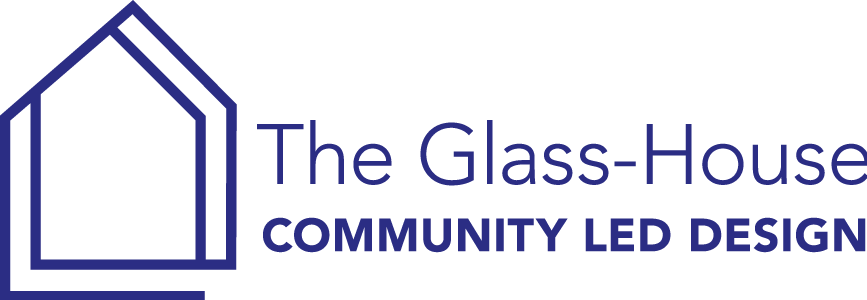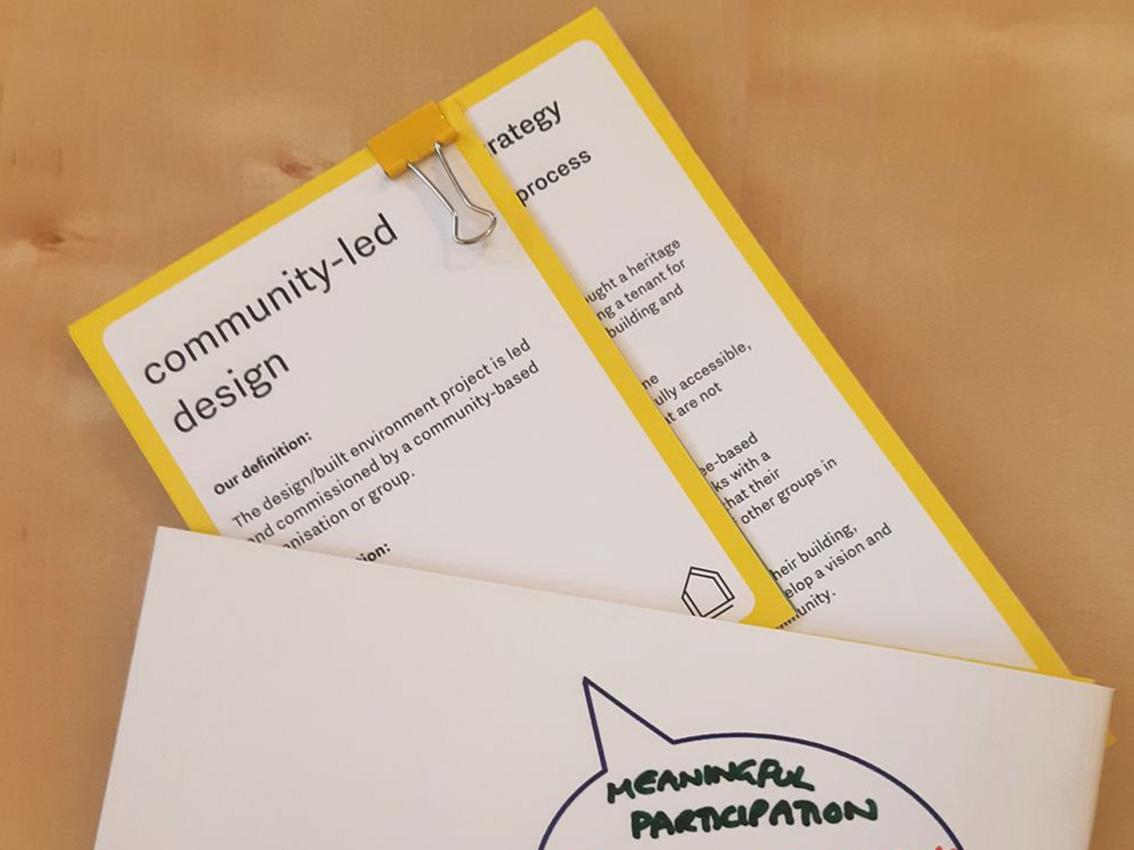The Royal Institute of British Architects (RIBA) commissioned The Glass-House to provide Continuing Professional Development (CPD) training on community engagement and collaborative design techniques.
Project date: 2019
The Story
The Royal Institute of British Architects (RIBA) commissioned The Glass-House to provide Continuing Professional Development (CPD) training on community engagement and collaborative design techniques as part of the 2019 RIBA Core Curriculum Programme, City Club Programme and in-practice offer. This took us to 20 locations across the country, and saw us providing training to over 700 design professionals.
During the seminars, participants were introduced to the language and approaches of collaborative design, were given examples of collaborative design and engagement activities from The Glass-House’s practice, and were introduced to the guiding principles for setting out a community engagement strategy for design and placemaking projects.
These were highly interactive seminars, with participants taking part in discussion and debate, and in individual and group activities. The activities were designed to help them explore both their existing and emerging understanding of collaborative design, and to work with others to share experiences and test ideas around community engagement in design. The sessions culminated with participants working together to co-design outline community engagement strategies for three different scenarios, which were designed to help explore the methods and approaches introduced in the seminar. Participants were also given practical print resources to take away.
For The Glass-House, this seminar series was also an opportunity to explore current attitudes and practice within the sector on engaging communities in design, and workshop materials were designed both to support interactive seminar activities and to help us gather data.
For example, seminar participants were given The Glass-House’s definitions of collaborative design terms: community-led design, co-design and participatory design, as well as examples of these approaches from our practice. They were then invited to work together to consider their own definitions of these terms, and to explore both the opportunities and challenges that come with them. 400 – 500 definitions for each term, as well as reflections on the various approaches, were collected from sessions around the country.
Those taking part were also asked to contribute stories from collaborative design projects that had inspired them. Around 200 stories from various collaborative design projects around the country have been collected.
The 2019 CPD seminar series created a great opportunity for The Glass-House to share our experience, as well as some practical tools and approaches from our work. It also brought us into dialogue with the sector at a time in which there is an increasing interest and great ambition for effective community engagement in design.
A webinar version of the seminar has been recorded, and is available on demand on the RIBA Academy website.


Impact
This seminar series brought us into contact with a broad spectrum of design professionals and practices around the country, and feedback on the sessions was extremely positive. 88% of participants agreed or strongly agreed that they had learned something new in the training and 79% said they would use what they learned in their work.
Participants on the whole really enjoyed the interactive nature of the seminar, and while challenged by the co-design activities, found it useful to put their learning into action immediately, and that they had also learned a great deal from each other through group work.
The Glass-House has gathered a large and incredibly rich data-set from the series, and we are now working to extract findings and to develop a resource which shares our learning and signposts the stories of great collaborative design projects that we have collected.
Preliminary findings illustrate the value of effective strategy building and facilitation. Whilst some architects were content to see community engagement as a route to buy-in, many others were concerned about whether it was possible to make collaborative design truly inclusive. Concerns about dominant characters, or a small group taking over the process were common, issues that can be addressed with good quality facilitation and appropriate planning.
Overall, the seminar participants felt that community engagement in design has a positive impact on design outcomes, and there appears to be a growing awareness of the need to build a greater understanding of and confidence in delivering effective community engagement.
Explore
Access the webinar online
A recorded webinar version of the seminar is now available on demand on RIBA Academy website.
Visit the RIBA website to learn more about their CPD programme.
Read our practical resources on community engagement techniques that we distributed at the seminars
DESIGNING PLACES WITH PEOPLE: Tips for your community engagement strategy
DESIGNING PLACES WITH PEOPLE: Making community engagement count
Visit the RESOURCES section on The Glass-House website to access more practical resources.
Here are links to just a few of the stories of collaborative design signposted by our seminar participants.
Eldonian Neighbourhood Village, Liverpool: Redevelopment of former Tate and Lyle works in Liverpool with and for local community. Recognised with a world habitat award. Although designed some time ago, the project demonstrates the principles of community
Peckham Levels, London: Developed in response to an open ideas competition announced by Southwark Council in September 2015. It was designed to support and inspire a new community of artists, makers and entrepreneurs.




